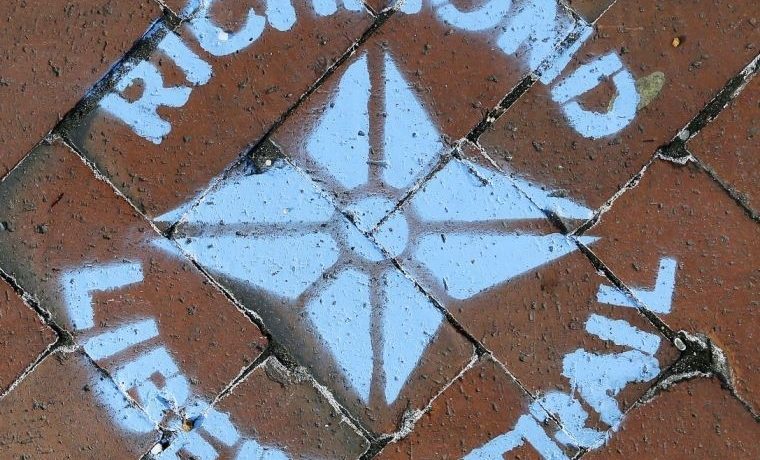Bill Martin, the director of the Valentine Richmond History Center, has lived in Church Hill for 12 years. And for every one of those years, he has spent his weekend mornings walking the streets, climbing the hills, and crossing the footbridges of RVA. In addition to citing the many health benefits of being an avid walker, he says, “When you live in a historic neighborhood, it is impossible not to walk. You discover new things every time you walk out your door.”
His routes are always unpredictable, are usually a bit of an adventure and typically end up being the length of a 10k. Martin says, “To walk a 10k, all you need to do is go as far away from your starting point as you can, and in an hour start making your way back home. In downtown, this can take you from Highland Park to Hollywood, from Manchester to Carver. You really never have to repeat a route.” When asked why he walks, he says, “There is so much to be learned by going to the places where history happened.”
One of his favorite routes is crossing the Mayo Bridge, traversing the top of the Flood Wall to Belle Isle and then making his way back to Church Hill along the canal. He is even known to do themed walks from time to time, including the spooky cemetery trail he blazes during the Halloween season.
Martin has taken hundreds of people with him over the years, introducing them to neighborhoods they have never seen and sharing the history of what has happened there. Without exception, everyone who has joined him on a walk has come back for another, with some regulars joining him almost every week.
It is not surprising that under Martin’s leadership, walking tours have become a big part of the Valentine’s programming. “(We) now offer almost 400 walking tours, which have been a great way to engage our community with their history,” he says.
Martin has also been an important driver in the development of The Liberty Trail, a product of the Greater Richmond Chamber of Commerce’s intercity visit to Boston last year. Working with the Richmond Slave Trail Commission and building on the Slave Trail experience, the route connects many of Richmond’s National Historic Landmark sites with complex history and historic architecture in between. According to Martin, “We wanted to make sure that that visitors and residents had a richer understanding of Richmond’s central role in a broader American story. It is certainly the Civil War and Emancipation, but it is also Revolution and Civil Rights.”
So the next time you are out and about on a weekend morning, keep an eye out for Martin walking the city streets, and feel free to stop and say hello, or even to dust off your sneakers and join him. It will undoubtedly be an experience you will remember. And if history is any indication, you too might become a regular on The Liberty Trail.


